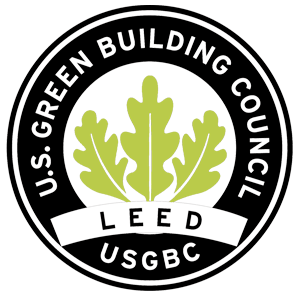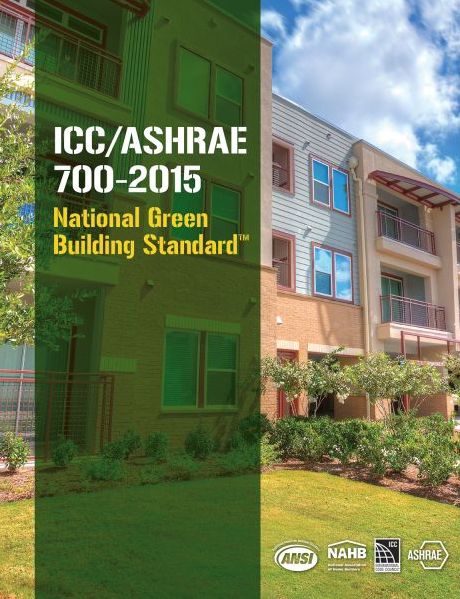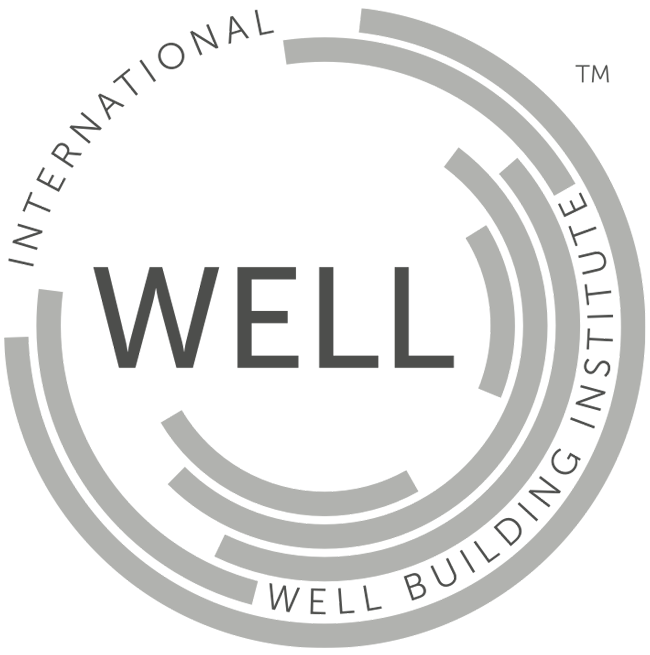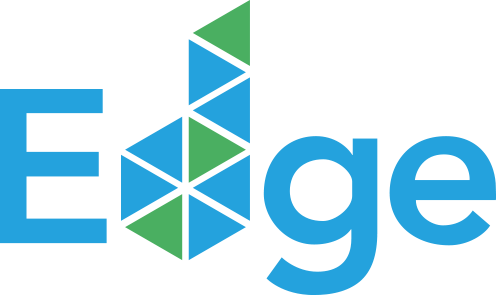-
1990
 BREEAM is launched in the United Kindom, Europe, which is the 1st in the world. It is the world’s leading sustainability assessment method for masterplanning projects, infrastructure and buildings. It recognises and reflects the value in higher performing assets across the built environment lifecycle, from new construction to in-use and refurbishment. BREEAM does this through third party certification of the assessment of an asset’s environmental, social and economic sustainability performance, using standards developed by BRE. This means BREEAM rated developments are more sustainable environments that enhance the well-being of the people who live and work in them, help protect natural resources and make for more attractive property investments.
BREEAM is launched in the United Kindom, Europe, which is the 1st in the world. It is the world’s leading sustainability assessment method for masterplanning projects, infrastructure and buildings. It recognises and reflects the value in higher performing assets across the built environment lifecycle, from new construction to in-use and refurbishment. BREEAM does this through third party certification of the assessment of an asset’s environmental, social and economic sustainability performance, using standards developed by BRE. This means BREEAM rated developments are more sustainable environments that enhance the well-being of the people who live and work in them, help protect natural resources and make for more attractive property investments.
However, at this the United State do not have any rating system that could be used for green building designs.
-
1992
 In 1992, the US Environmental Protection Agency (EPA) introduced ENERGY STAR as a voluntary labeling program designed to identify and promote energy-efficient products to reduce greenhouse gas emissions.
In 1992, the US Environmental Protection Agency (EPA) introduced ENERGY STAR as a voluntary labeling program designed to identify and promote energy-efficient products to reduce greenhouse gas emissions.
At this time point, there is not specific part in the ENERGY STAR that is designed for building system.
-
1993
 The U.S. Green Building Council (USGBC), co-founded by Mike Italiano, David Gottfried and Rick Fedrizzi in 1993, is a private 501(c)3, membership-based non-profit organization that promotes sustainability in building design, construction, and operation.
The U.S. Green Building Council (USGBC), co-founded by Mike Italiano, David Gottfried and Rick Fedrizzi in 1993, is a private 501(c)3, membership-based non-profit organization that promotes sustainability in building design, construction, and operation.
-
1995
 The ENERGY STAR label for new homes was first offered in 1995. At that time, the ENERGY STAR guidelines focused on improvements in several key areas of the home, including high-performance windows, tight construction and ducts, and efficient heating and cooling equipment, along with third-party verification by a certified Home Energy Rater. These initial guidelines stayed in effect for 10 years, with some regional modifications to reflect more rigorous local codes or construction practices.
The ENERGY STAR label for new homes was first offered in 1995. At that time, the ENERGY STAR guidelines focused on improvements in several key areas of the home, including high-performance windows, tight construction and ducts, and efficient heating and cooling equipment, along with third-party verification by a certified Home Energy Rater. These initial guidelines stayed in effect for 10 years, with some regional modifications to reflect more rigorous local codes or construction practices.
-
1998
 Leadership in Energy and Environmental Design (LEED) was created by the U.S. Green Building Council, USGBC in 1998. It is the sustainability rating system developed in the United States, assessing the operation, design, and construction of buildings. It is intended to provide a list of ways to implement and measure green buildings. LEED is a comprehensive green building rating system which was first designed in United State.
Leadership in Energy and Environmental Design (LEED) was created by the U.S. Green Building Council, USGBC in 1998. It is the sustainability rating system developed in the United States, assessing the operation, design, and construction of buildings. It is intended to provide a list of ways to implement and measure green buildings. LEED is a comprehensive green building rating system which was first designed in United State.
-
1999
 The First ENERGY STAR label was awarded to a commercial office building. This is a remarkable improvement for building industry, however, the ENERGY STAR is a rating system for all kind of objects.
The First ENERGY STAR label was awarded to a commercial office building. This is a remarkable improvement for building industry, however, the ENERGY STAR is a rating system for all kind of objects.
-
2000
 The Leadership in Energy and Environmental Design, or LEED, rating system was officially unveiled in 2000. Although LEED is mostly focused on the United States, it has been leveraged in 167 countries and is the most widely used third-party verification for how green a building is.
The Leadership in Energy and Environmental Design, or LEED, rating system was officially unveiled in 2000. Although LEED is mostly focused on the United States, it has been leveraged in 167 countries and is the most widely used third-party verification for how green a building is.
LEED has two very different components: Accreditation and certification. Accreditation is awarded to an individual in the form of LEED Green Associate, LEED Accredited Professional which is also known as LEED AP, or LEED Fellow.
We could say that till now we have a the first and in-used rating system that was designed specifically for builings industries.
-
2006
 The Living Building Challenge is introduced by the Cascadia Green Building Council. It is an ever-evolving program shaped by the incredible experiences of our project teams as they continually break new ground. Over time, feedback from a diverse array of stakeholders actively using the challenge helps us understand how to refine and improve the program to have the greatest impacts.
The Living Building Challenge is introduced by the Cascadia Green Building Council. It is an ever-evolving program shaped by the incredible experiences of our project teams as they continually break new ground. Over time, feedback from a diverse array of stakeholders actively using the challenge helps us understand how to refine and improve the program to have the greatest impacts.
Remarkablely, it is the first rating system that incorporate human factors into the rating process.
-
2008
 The National Green Building Standard (NGBS) was launched which is the only green building rating system for homes and apartments approved by the American National Standards Institute (ANSI), as an American National Standard. The NGBS provides a blueprint for builders to follow for the design and construction of new and renovated single-family homes and multifamily apartment buildings.
The National Green Building Standard (NGBS) was launched which is the only green building rating system for homes and apartments approved by the American National Standards Institute (ANSI), as an American National Standard. The NGBS provides a blueprint for builders to follow for the design and construction of new and renovated single-family homes and multifamily apartment buildings.
-
2014
 The International WELL Building Institute (IWBI) is intriduced to the building industry, which explores how design, operations and behaviors within the places where we live, work, learn and play can be optimized to advance human health and well-being. Covering seven core concepts of health and hundreds of features, WELL is a flexible building standard and represents the future of design. the world’s first building standard focused exclusively on human health and wellness
The International WELL Building Institute (IWBI) is intriduced to the building industry, which explores how design, operations and behaviors within the places where we live, work, learn and play can be optimized to advance human health and well-being. Covering seven core concepts of health and hundreds of features, WELL is a flexible building standard and represents the future of design. the world’s first building standard focused exclusively on human health and wellness
 Excellence in Design for Greater Efficiencies(EDGE) was launced which reveals the systems and solutions that work best for climate, bringing international cachet to your certified project without losing the local context. Meet the growing expectations of customers by creating value and positively impacting their lives, resulting in greater profitability and a healthier environment for all.
Excellence in Design for Greater Efficiencies(EDGE) was launced which reveals the systems and solutions that work best for climate, bringing international cachet to your certified project without losing the local context. Meet the growing expectations of customers by creating value and positively impacting their lives, resulting in greater profitability and a healthier environment for all.
Worth to mention that, the building standards and rating systems are no longer only focus on the energy along but also extend its scope to human well-being and climate impact.




 BREEAM is launched in the United Kindom, Europe, which is the 1st in the world. It is the world’s leading sustainability assessment method for masterplanning projects, infrastructure and buildings. It recognises and reflects the value in higher performing assets across the built environment lifecycle, from new construction to in-use and refurbishment. BREEAM does this through third party certification of the assessment of an asset’s environmental, social and economic sustainability performance, using standards developed by BRE. This means BREEAM rated developments are more sustainable environments that enhance the well-being of the people who live and work in them, help protect natural resources and make for more attractive property investments.
BREEAM is launched in the United Kindom, Europe, which is the 1st in the world. It is the world’s leading sustainability assessment method for masterplanning projects, infrastructure and buildings. It recognises and reflects the value in higher performing assets across the built environment lifecycle, from new construction to in-use and refurbishment. BREEAM does this through third party certification of the assessment of an asset’s environmental, social and economic sustainability performance, using standards developed by BRE. This means BREEAM rated developments are more sustainable environments that enhance the well-being of the people who live and work in them, help protect natural resources and make for more attractive property investments. In 1992, the US Environmental Protection Agency (EPA) introduced ENERGY STAR as a voluntary labeling program designed to identify and promote energy-efficient products to reduce greenhouse gas emissions.
In 1992, the US Environmental Protection Agency (EPA) introduced ENERGY STAR as a voluntary labeling program designed to identify and promote energy-efficient products to reduce greenhouse gas emissions.  The U.S. Green Building Council (USGBC), co-founded by Mike Italiano, David Gottfried and Rick Fedrizzi in 1993, is a private 501(c)3, membership-based non-profit organization that promotes sustainability in building design, construction, and operation.
The U.S. Green Building Council (USGBC), co-founded by Mike Italiano, David Gottfried and Rick Fedrizzi in 1993, is a private 501(c)3, membership-based non-profit organization that promotes sustainability in building design, construction, and operation.  Leadership in Energy and Environmental Design (LEED) was created by the U.S. Green Building Council, USGBC in 1998. It is the sustainability rating system developed in the United States, assessing the operation, design, and construction of buildings. It is intended to provide a list of ways to implement and measure green buildings. LEED is a comprehensive green building rating system which was first designed in United State.
Leadership in Energy and Environmental Design (LEED) was created by the U.S. Green Building Council, USGBC in 1998. It is the sustainability rating system developed in the United States, assessing the operation, design, and construction of buildings. It is intended to provide a list of ways to implement and measure green buildings. LEED is a comprehensive green building rating system which was first designed in United State. The Living Building Challenge is introduced by the Cascadia Green Building Council. It is an ever-evolving program shaped by the incredible experiences of our project teams as they continually break new ground. Over time, feedback from a diverse array of stakeholders actively using the challenge helps us understand how to refine and improve the program to have the greatest impacts.
The Living Building Challenge is introduced by the Cascadia Green Building Council. It is an ever-evolving program shaped by the incredible experiences of our project teams as they continually break new ground. Over time, feedback from a diverse array of stakeholders actively using the challenge helps us understand how to refine and improve the program to have the greatest impacts. The National Green Building Standard (NGBS) was launched which is the only green building rating system for homes and apartments approved by the American National Standards Institute (ANSI), as an American National Standard. The NGBS provides a blueprint for builders to follow for the design and construction of new and renovated single-family homes and multifamily apartment buildings.
The National Green Building Standard (NGBS) was launched which is the only green building rating system for homes and apartments approved by the American National Standards Institute (ANSI), as an American National Standard. The NGBS provides a blueprint for builders to follow for the design and construction of new and renovated single-family homes and multifamily apartment buildings.  The International WELL Building Institute (IWBI) is intriduced to the building industry, which explores how design, operations and behaviors within the places where we live, work, learn and play can be optimized to advance human health and well-being. Covering seven core concepts of health and hundreds of features, WELL is a flexible building standard and represents the future of design. the world’s first building standard focused exclusively on human health and wellness
The International WELL Building Institute (IWBI) is intriduced to the building industry, which explores how design, operations and behaviors within the places where we live, work, learn and play can be optimized to advance human health and well-being. Covering seven core concepts of health and hundreds of features, WELL is a flexible building standard and represents the future of design. the world’s first building standard focused exclusively on human health and wellness Excellence in Design for Greater Efficiencies(EDGE) was launced which reveals the systems and solutions that work best for climate, bringing international cachet to your certified project without losing the local context. Meet the growing expectations of customers by creating value and positively impacting their lives, resulting in greater profitability and a healthier environment for all.
Excellence in Design for Greater Efficiencies(EDGE) was launced which reveals the systems and solutions that work best for climate, bringing international cachet to your certified project without losing the local context. Meet the growing expectations of customers by creating value and positively impacting their lives, resulting in greater profitability and a healthier environment for all.